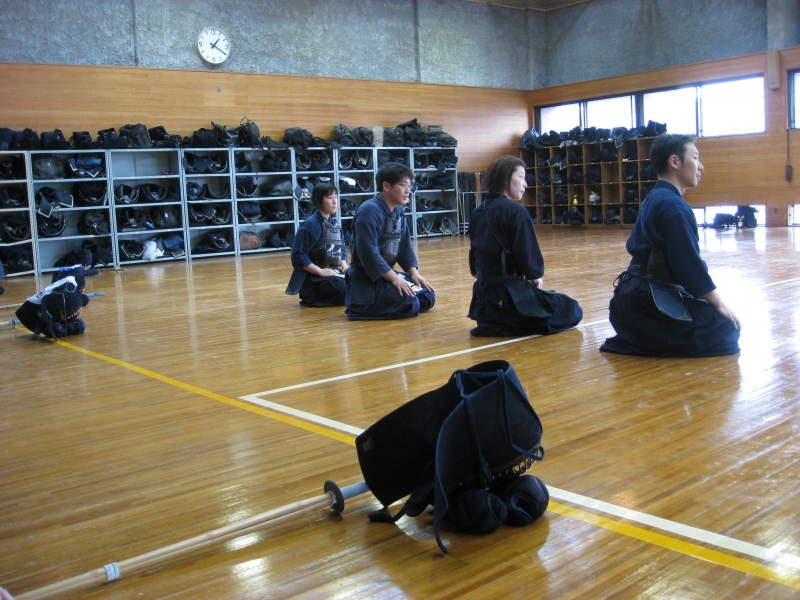
Courtesy of Paul and his contacts, we were allowed to enter a Japanese police station and see some of the world's best kendo masters practice their technique. In case you don't know, kendo is Japanese fencing. They use bamboo swords that have the same weight and balance as a katana. Their strikes are accompanied by loud gutteral sounds somewhere between a grunt and a scream. Thanks to some experience with aikido, I had a feel for some of what I was watching. There are only a few basic strikes in kendo. Mainly the hand, the face, and the stomach. The real art to kendo is not just the motions and the form. It's being able to read your opponent and react quickly enough. Each person is different, and a large part of it is gaining control of your own tendencies that an enemy may exploit or, if it's a good thing, that you may use to your advantage. Absolutely fascinating once you get into it, as I believe most martial arts have at least some degree of this aspect. I've seen Paul on occasion use his technique in Renaissance Faire fencing competitions and he's pretty bad-ass. That said, wearing the armor required for kendo seems like a PAIN in the ass, and I'm glad I chose the far more portable aikido. Unfortunately, Paul was not able to join the practice because of the difficulties with lugging his armor all around Japan. He does plan to go back, however, and I hope he gets another chance.
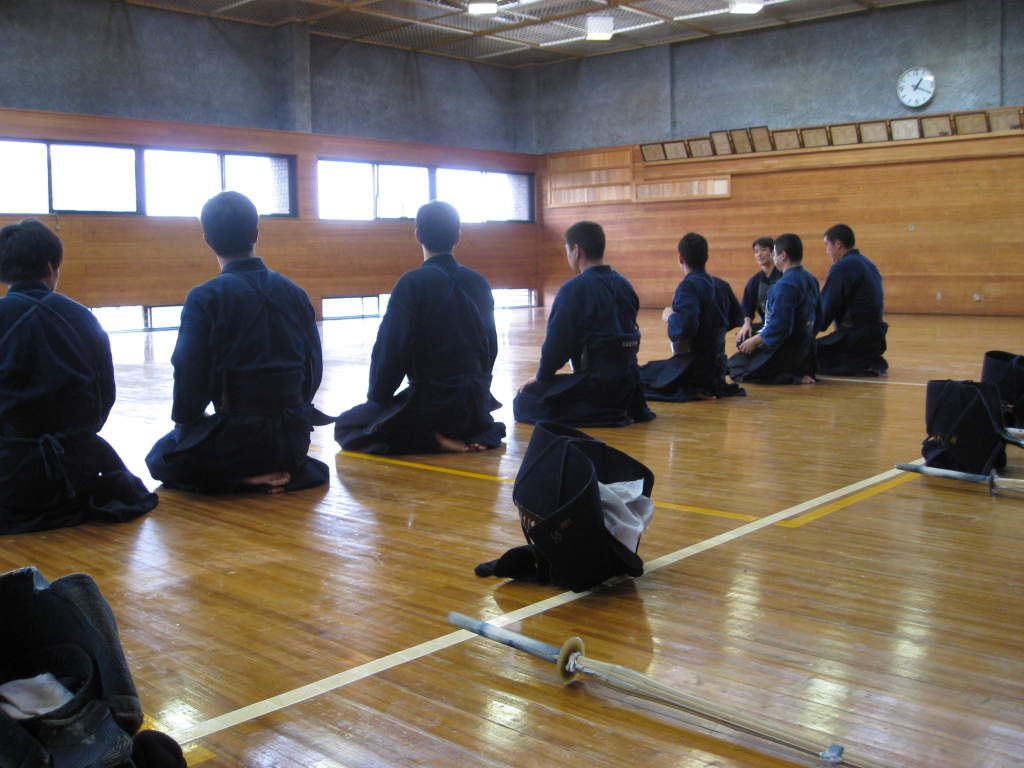
Kendo students line up, sitting "seiza", in preparation for the start of the practice session.
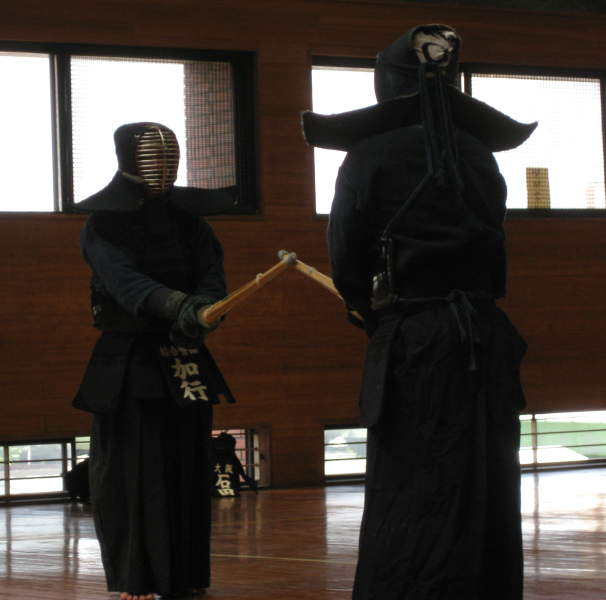
These two are gauging each other's balance and readiness, searching for weak points.
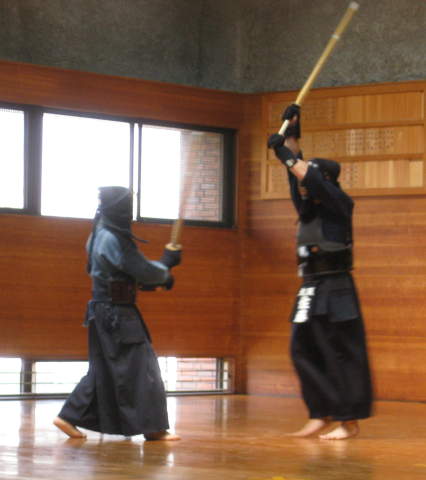
Sometimes the best strategy is to reach up high and try to bop your opponent on the head. There are actually different styles of kendo, and some prefer to start with the sword up high. Others start with the sword pointing outward, like in the last picture. I'd imagine it might be harder to gauge the reach of someone with their sword lofted upward. If you're wondering what they'd do in a room with a low ceiling, I can answer this. Paul invited some kendo students to his condo for New Year's once. His ceiling got carved up worse than a scratching post in a tiger's den.
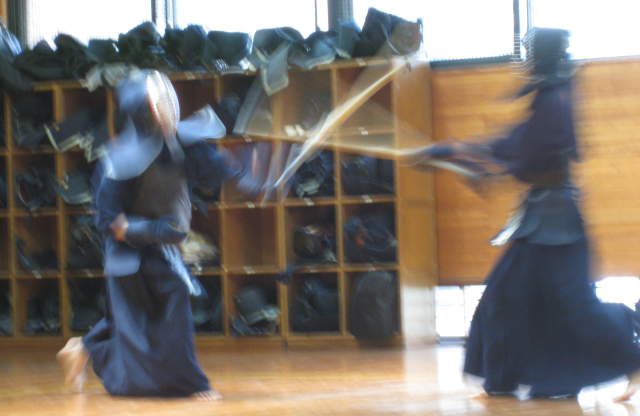
When you get good enough at kendo, you can make it very difficult to take pictures of you.
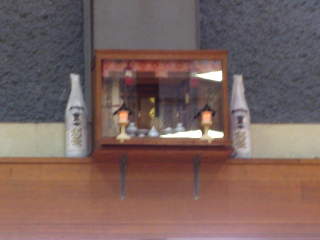
Paul explained the symbolism of this, which was mounted high on a wall in a dojo, but I forgot what he told me. I wonder if it's bad to look at this and see two bottles of Malibu.
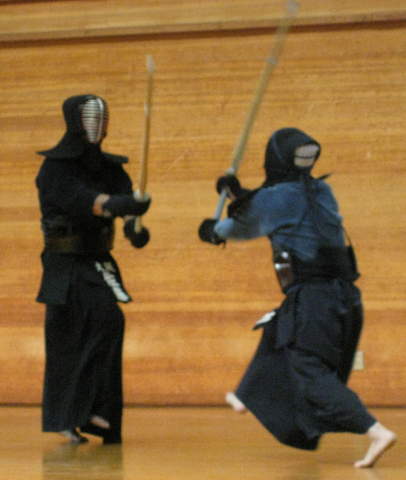
It looks to me like the aggressor is staying lower than would feel natural. This might be to get a better lunge, since when you're lower, your legs have more reach and can lunge more powerfully. Perhaps the attacker is staying low to avoid being cracked on the head. The defender doesn't look too worried, however. By my estimation, the defender is going to swing, and going to swing hard at the best possible spot to swing at, while moving ever so slightly, just enough to avoid the attack.
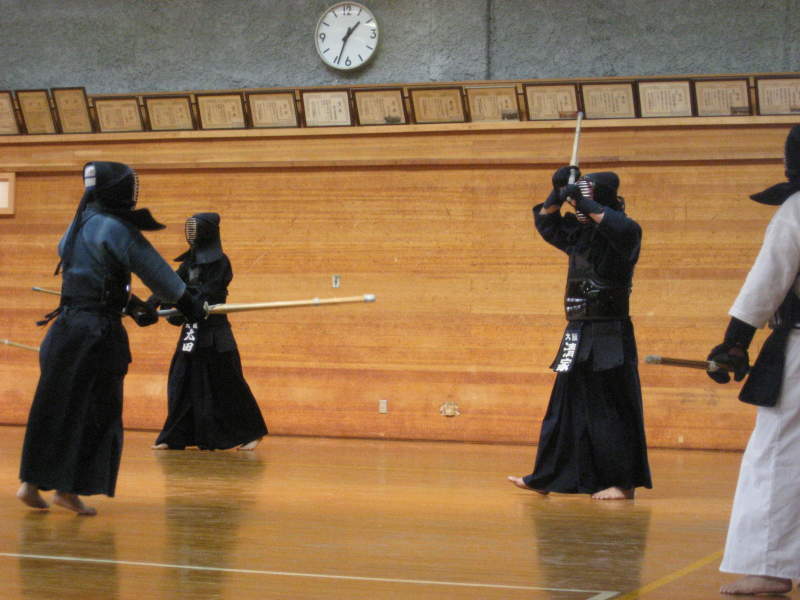
Here are the two different stances I was talking about.
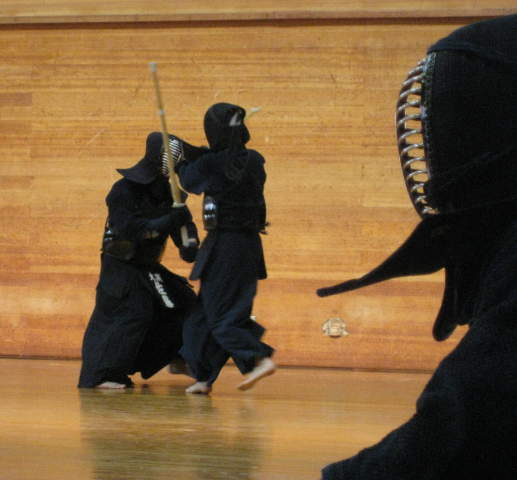
Often, one can learn a lot by simply observing. Observing is less painful too.
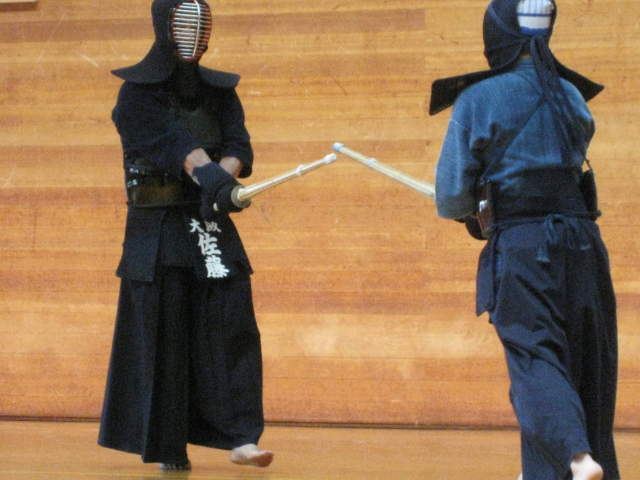
The Japanese, historically, have a tendency to emulate the strongest. Their Japanese characters (kanji) were derived from Chinese. The Chinese at the time were certainly a relatively strong nation, and the Japanese admired them. Well, this is the same in kendo as well. The one in black is one of the best, and is leading this practice session. During the practice, people rush over to him to challenge him, before anyone else, because he is the best in the dojo, and the greatest challenge, especially early on, before he wears down at all.
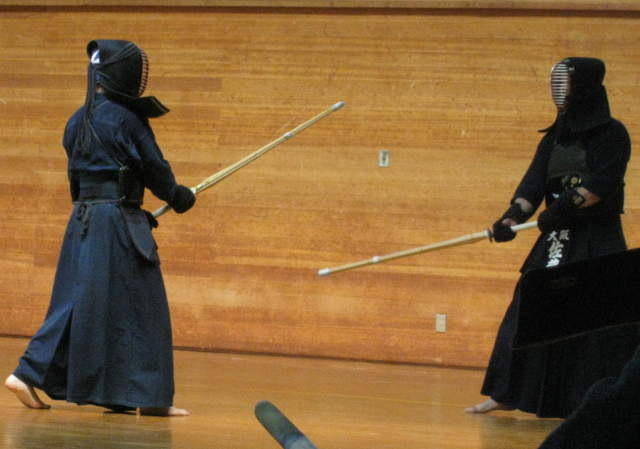
Whoever strikes and hits first wins. There is far less blocking than you might see in the movies.
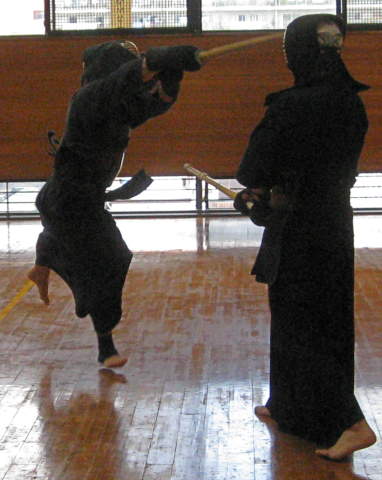
Sometimes I imagine blocking might be in order.
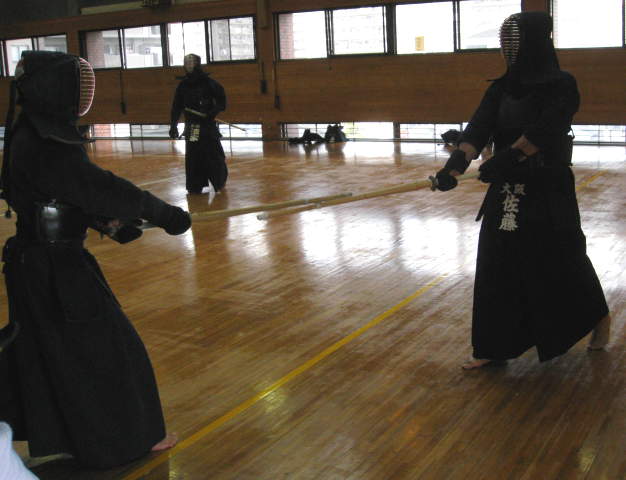
Two opponents usually circle around, keeping their swords near each other, until the attack. By the way, the symbols hanging from their waists signify the primary dojos they study at.
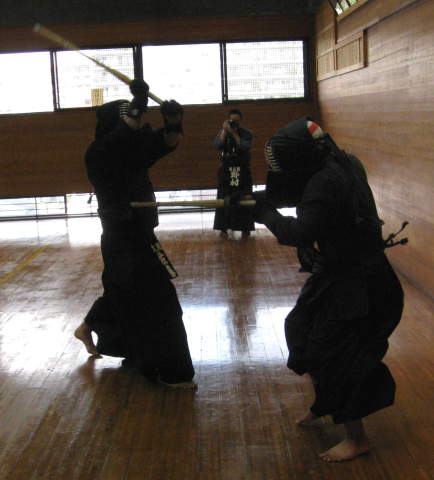
One's going for the face, or maybe the hand. The other is slashing across the stomach.
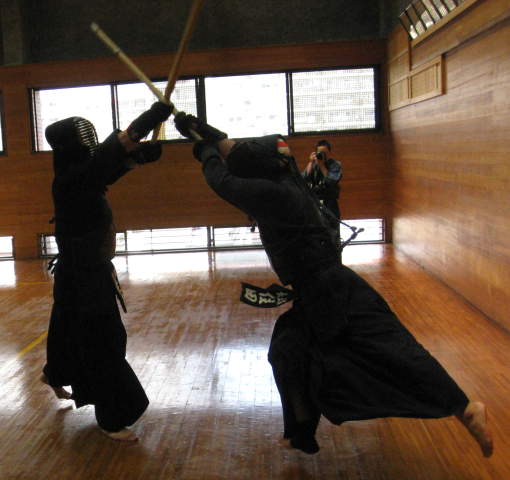
There was a local with a camera other than me snapping a lot of pictures during this practice. Sometimes we snapped pictures of each other too.
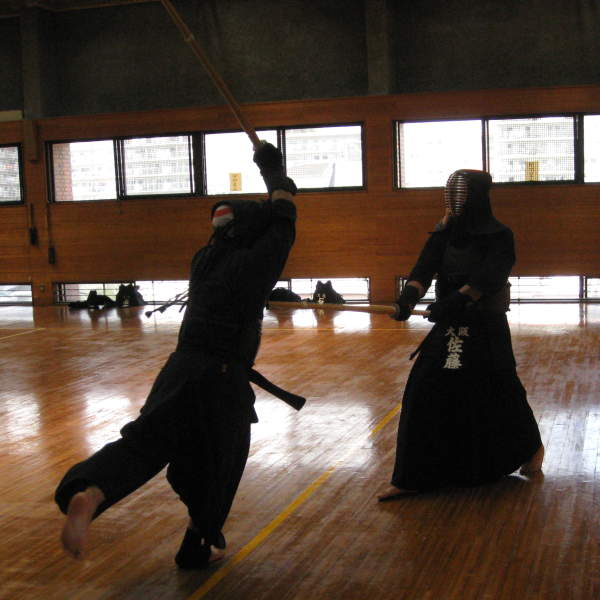
The sensei had great success yet didn't move very much. This gave him a large advantage by using less energy than, say, the guy on the left. Just like the aikido dojo in Nagoya that I visited, it was very hot in this dojo/gymnasium as well. That and the armor didn't make a good combination for their personal comfort. At the end of the practice, the sensei approached us on our way out. He said he could teach us kendo too, and I believe him. My heart is with aikido, and on occasion, they let us play with swords too.
Back